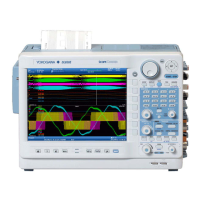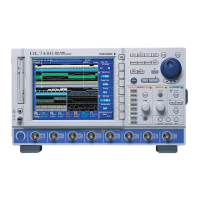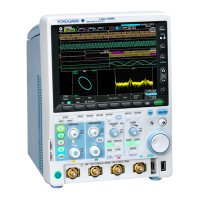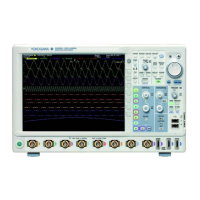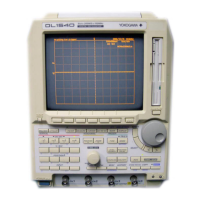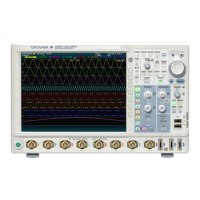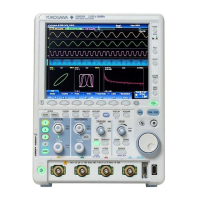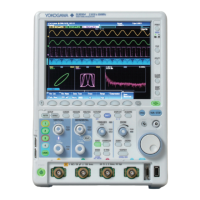Triggering
6
7
8
9
10
11
12
13
14
15
16
17
18
Index
App
6-9
IM DLM6054-01EN
Trigger Level (LEVEL)
You can set the signal level to use as a reference for detecting a signal’s rising and falling edges or
high and low states. With the edge trigger, the DL6000/DLM6000 triggers when the trigger source level
passes through the specified trigger level.
The analog signals (CH1 to CH4) and the logic signal (LOGIC) have different trigger level ranges.
Analog Signals
Range: 8 divisions within the screen
Resolution: 0.01 divisions (for example: 0.02 V when the time axis is set to 2 V/division)
Logic Signal (DLM6000)
The range varies depending on the logic probe that you use.
•
Model 701981: ±10 V (0.1 V resolution)
•
Model 701980: ±40 V (0.1 V resolution)
•
Model 701988: ±40 V (0.05 V resolution)
•
Model 701989: ±6 V (0.05 V resolution)
Note
• The trigger level is set using the jog shuttle. If a single trigger source is used (Edge, Edge Qualified, Pulse
Width, CAN, LIN, UART, or TV), you can also use the front-panel LEVEL knob to set the trigger level.
• When the front-panel LEVEL knob is valid, you can press it to automatically set the trigger level.
• If the jog shuttle is controlling the trigger level, you can press RESET to reset the trigger level to the
current offset voltage.
• The range of threshold levels that you can use to detect logic signal bit states is the same as the range of
the source bit trigger level.
• You can set the logic signal’s bit levels using Threshold in the LOGIC key menu (see section 5.2).
• You can reset the trigger level to the current offset voltage by pressing RESET.
• When the window comparator is on, set the window width and the window center point.
6.3 Triggering on an Edge Trigger
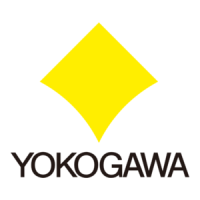
